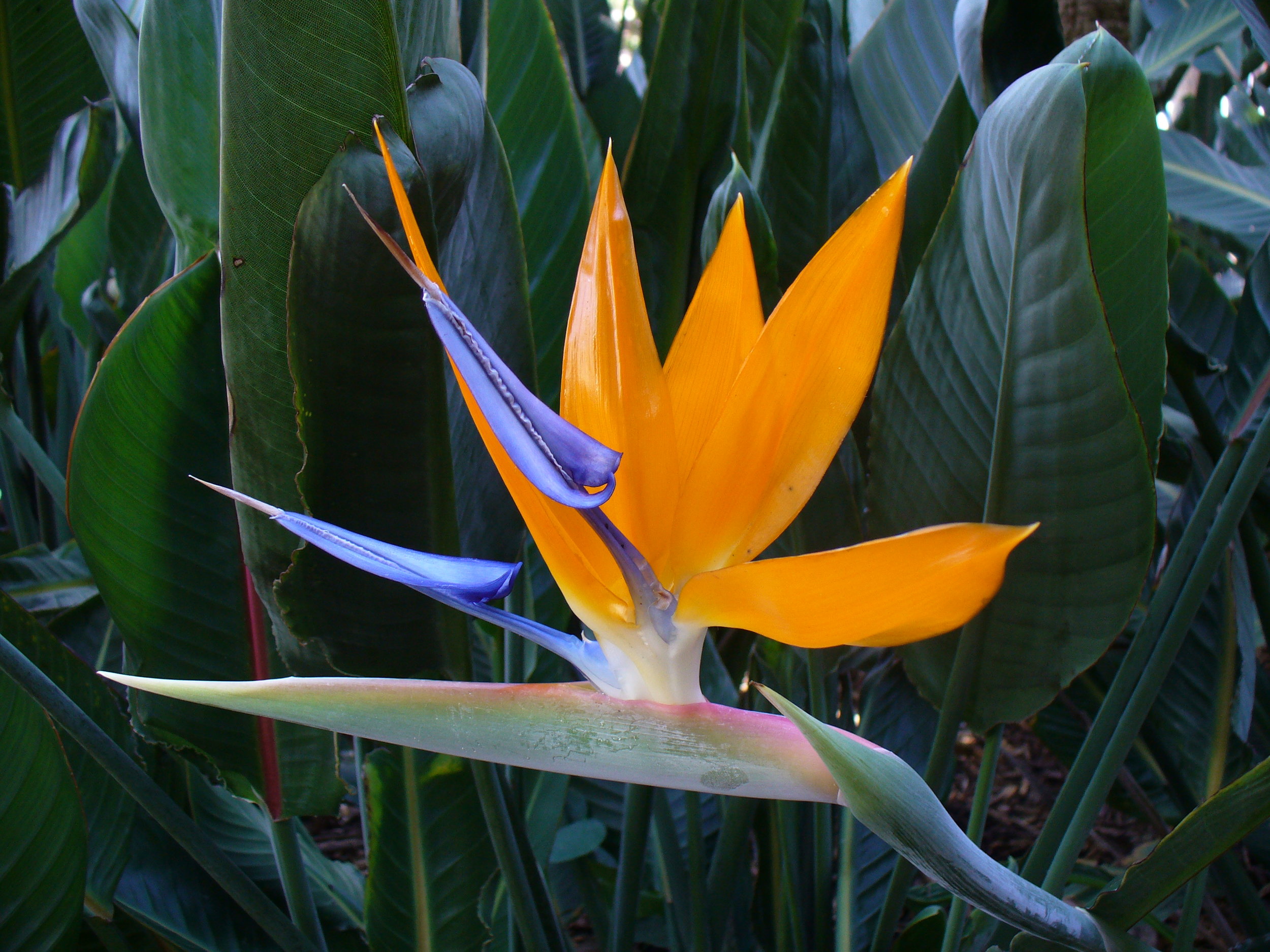Public domain
Who hasn't stared in wonderment at the inflorescence of a bird of paradise? One doesn't need too much of an imagination to understand how these plants got this common name. Flowers, however, did not evolve in response to our aesthetic tastes. They are solely for sex and in the case of bird of paradise, Strelitzia reginae, pollination involves birds.
In its native range in South Africa, S. reginae is pollinated by sunbirds, primarily the Cape weaver (Ploceus capensis). That alluring floral morphology is wonderfully adapted to maximize the chances of successful cross-pollination by their avian visitors. Cape weavers are looking for a sip of energy rich nectar. To get at said nectar, the birds must perch on the inflorescence. Not any position will do either.
Photo by Forest & Kim Starr licensed under CC BY 3.0
To get their reward, the birds must perch so that their beaks are at just the right angle to reach down into the floral tubes. The plant ensures this by providing a convenient perch. Those fused blue petals are structurally reinforced and actually serve as a convenient perch! Upon alighting on the perch, the hidden anthers are thrust outward from their resting chamber, brushing up against the bird's feet in the process. The Cape weaver doesn't move around much once on the flower so self pollination is minimized.
When the bird visits another plant, the process is repeated and pollination is achieved. Seed set is severely pollen limited. This is a good thing considering how popular they are in cultivation. Plants growing outside of South Africa rarely set seed without a helping hand. However, here in North America, some birds seemed to have figured out how to get at bird of paradise nectar.
Observations made in southern California found that at least one species of warbler, the common yellowthroat (Geothlypis trichas), not only made regular visits to a stand of S. reginae, it also seemed to figure out the proper way to do so. Individuals were seen perching on the floral perch and drinking the nectar. They were pretty effective visitors at that. Of the 14,400 inflorescence found within the study area, 88% of them produced viable seed! It seems that far from its native range, S. reginae has a friend in at least one New World warbler. Armed with this knowledge, land owners should be vigilant to ensure this plant doesn't become a problem in climates suitable for its growth.
Further Reading: [1]


![[SOURCE]](https://images.squarespace-cdn.com/content/v1/544591e6e4b0135285aeb5b6/1508366091036-SYC44VSQE4GJJEZHZQX9/1-s2.0-S0254629910002462-gr1.jpg)




![[SOURCE]](https://images.squarespace-cdn.com/content/v1/544591e6e4b0135285aeb5b6/1488129459198-NGKRHB3VGTZN37JWFVUN/image-asset.png)

